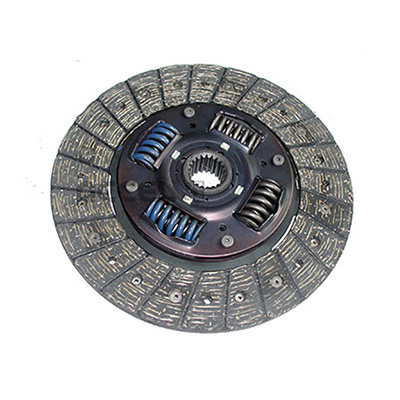- Arabic
- French
- Russian
- Spanish
- Portuguese
- Turkish
- Armenian
- English
- Albanian
- Amharic
- Azerbaijani
- Basque
- Belarusian
- Bengali
- Bosnian
- Bulgarian
- Catalan
- Cebuano
- Corsican
- Croatian
- Czech
- Danish
- Dutch
- Afrikaans
- Esperanto
- Estonian
- Finnish
- Frisian
- Galician
- Georgian
- German
- Greek
- Gujarati
- Haitian Creole
- hausa
- hawaiian
- Hebrew
- Hindi
- Miao
- Hungarian
- Icelandic
- igbo
- Indonesian
- irish
- Italian
- Japanese
- Javanese
- Kannada
- kazakh
- Khmer
- Rwandese
- Korean
- Kurdish
- Kyrgyz
- Lao
- Latin
- Latvian
- Lithuanian
- Luxembourgish
- Macedonian
- Malgashi
- Malay
- Malayalam
- Maltese
- Maori
- Marathi
- Mongolian
- Myanmar
- Nepali
- Norwegian
- Norwegian
- Occitan
- Pashto
- Persian
- Polish
- Punjabi
- Romanian
- Samoan
- Scottish Gaelic
- Serbian
- Sesotho
- Shona
- Sindhi
- Sinhala
- Slovak
- Slovenian
- Somali
- Sundanese
- Swahili
- Swedish
- Tagalog
- Tajik
- Tamil
- Tatar
- Telugu
- Thai
- Turkmen
- Ukrainian
- Urdu
- Uighur
- Uzbek
- Vietnamese
- Welsh
- Bantu
- Yiddish
- Yoruba
- Zulu
Hyd . 09, 2024 13:56 Back to list
manufacture belt
The Evolution and Importance of Manufacturing Belts in Modern Industry
Manufacturing belts serve as the backbone of industrial operations, playing a crucial role in the production processes across various sectors. From automotive to textiles, the need for an efficient and reliable method of transferring power and materials has made manufacturing belts indispensable in the modern industrial landscape. This article explores the evolution, types, and significance of manufacturing belts in contemporary practices.
Historical Overview
The use of belts in manufacturing dates back to the onset of the Industrial Revolution in the late 18th century. Initially, leather belts were utilized to connect water wheels to machinery in mills, making them one of the first forms of power transmission. As industries evolved, so did the materials and technologies behind manufacturing belts. The introduction of synthetic materials in the 20th century led to significant advancements in durability, flexibility, and performance, allowing for a shift towards more complex manufacturing processes.
Types of Manufacturing Belts
Manufacturing belts can be categorized into several types, each designed to serve specific functions
.1. Flat Belts These are used primarily for the transmission of power between shafts that are relatively far apart. Their simple design makes them easy to maintain and replace, though they can suffer from slippage if not properly tensioned.
2. V-Belts Recognized for their trapezoidal cross-section, V-belts provide better grip and efficiency when transmitting power from a motor to a driven component. They are widely used in applications ranging from HVAC systems to automotive engines.
3. Timing Belts With teeth designed to fit into grooves on pulleys, timing belts ensure precise synchronization between moving parts. This precision makes them essential in high-speed applications, such as in robotics and automotive camshaft systems.
manufacture belt

4. Conveyor Belts Often used in material handling, conveyor belts transport products and materials from one location to another within a facility. Their design can vary widely, tailored for specific applications—such as food production or heavy-load transport.
5. Specialty Belts This category includes belts designed for unique applications. For instance, modular belts made from interlocking plastic pieces can be configured for various tasks in the food processing industry, ensuring easy cleaning and maintenance.
Importance in Modern Manufacturing
The significance of manufacturing belts cannot be understated. They not only enhance the efficiency of production processes but also contribute to the safety and reliability of machinery. A properly functioning belt system minimizes downtime, reduces maintenance costs, and prevents workplace accidents.
Moreover, with the rise of automation and smart manufacturing, the role of belts is becoming increasingly sophisticated. Modern manufacturing belts are often integrated with sensors and smart technology, enabling real-time monitoring of performance. This integration helps in predictive maintenance, allowing firms to address potential failures before they occur, thus saving both time and resources.
Innovations and Sustainability
As industries face the challenges of sustainability and environmentally friendly practices, the development of eco-friendly manufacturing belts is gaining traction. Manufacturers are exploring materials that reduce environmental impact, such as biodegradable polymers and recycled materials. Furthermore, innovations in design and engineering aim to create belts that are not only more efficient but also have a longer lifespan, reducing waste.
Conclusion
In conclusion, manufacturing belts have evolved significantly since their inception, adapting to meet the increasing demands of modern industry. Their various types cater to a vast array of applications, each contributing to the smooth functioning of production processes. As the manufacturing landscape continues to change, the development and innovation of manufacturing belts will remain a critical focus for ensuring efficiency, safety, and sustainability in industrial operations. The future of manufacturing will undoubtedly hinge on the continued improvement and adaptation of these essential components.
-
Korean Auto Parts Timing Belt 24312-37500 For Hyundai/Kia
NewsMar.07,2025
-
7PK2300 90916-T2024 RIBBED BELT POLY V BELT PK BELT
NewsMar.07,2025
-
Chinese Auto Belt Factory 310-2M-22 For BMW/Mercedes-Benz
NewsMar.07,2025
-
Chinese Auto Belt Factory 310-2M-22 For BMW/Mercedes-Benz
NewsMar.07,2025
-
90916-02660 PK Belt 6PK1680 For Toyota
NewsMar.07,2025
-
drive belt serpentine belt
NewsMar.07,2025

